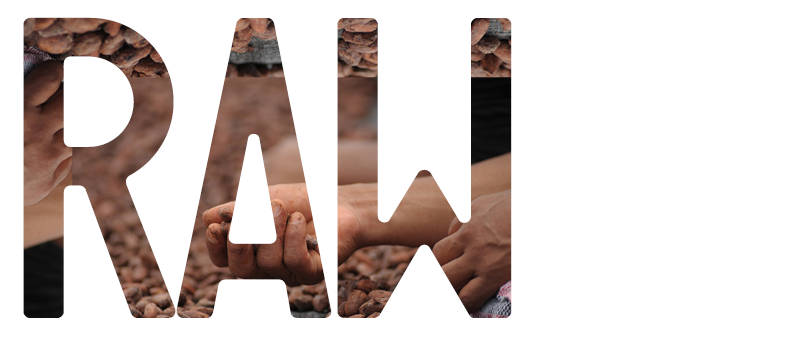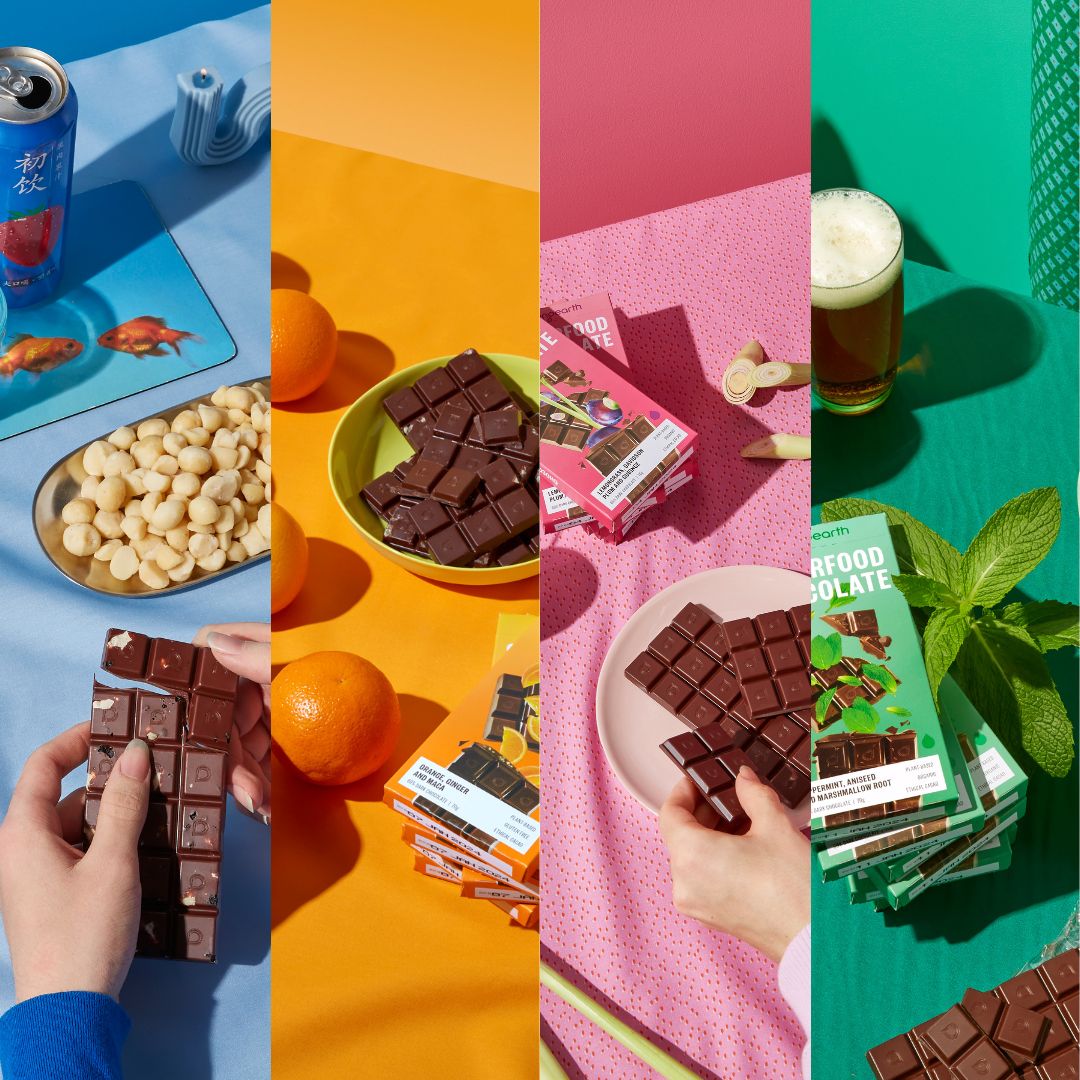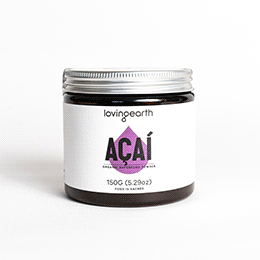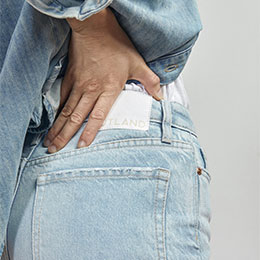raw
/rɔː/
adjective
- 1.
(of food) not cooked.
"raw cacao"
synomyms: uncooked, fresh; undone

Over the ten years that we have been making chocolate we have discovered that the word "raw" is often used incorrectly in relation to cacao and chocolate. In 2006 David Wolfe was at the forefront of ‘raw’ cacao publishing the book "Naked Chocolate".
In recent times, raw has become a bit of a buzz word synonymous with health. Raw Vegan is a food movement where people only eat plant-based food that has not been heated above 40°C - 49°C. the idea being that anything above this temperature would denature some of the vital nutrients in the food.
In our research over the years we have discovered that most cacao is either roasted or heated to above the 49°C, particularly in the process to extract the powder and butter from the cacao beans.*
The best way to actually tell if cacao is raw or not is via its taste. When you taste “raw” powder and butter it doesn’t taste like raw cacao. In 2013 we noticed that there was a difference in flavour between the raw nibs and the "raw" powder that we were importing. The flavour profile of the powder had chocolate notes, a flavour that only comes from roasting. One of the main reasons why cacao is roasted most of the time is that, it is the only way you get the chocolate flavour that everyone has become accustomed to - just like roasting coffee beans creates the distinctive coffee flavour and aroma. Cacao when it is unroasted has a much more earthy bitter flavour. The common cacao varieties like forestero and trinitario are not very palatable raw, hence why the standard industry procedure is to roast. We work with fine aromatic heirloom criollo cacao sourced from the amazon which has a complex fruity flavour profile. Through not roasting this cacao we maintain the full complexity of the flavour profile which almost tastes and smells more like wine than chocolate.
On a trip to Peru in 2015, when we visited the processing plants, we confirmed that the powder and butter were roasted and processed so we stopped saying that our cacao powder and butter was raw. Ecuadorian and Peruvian producers discovered if they called the cacao powder and butter they were processing and selling as “raw” they could get a higher price for it, and sell more of it. A shrewd business move, but confusing for the importers and consumers alike.
Loving Earth Chocolate – so what is raw and what isn’t?
In our chocolate range we use beans, virgin cacao butter** and powder and only use the term raw now on our chocolate products when referring to the raw bean component. This is because of the process we use to make our chocolate and the knowledge we have of where our cacao comes from.
With the processing of the beans the only part of the process that we don’t control is the fermentation and sun drying.
After the beans are harvested they are fermented where temperatures can get up to the low 50 °C, which is higher than the raw cut-off temperature, but not by much and the heat is generated through fermenting, not cooking or roasting. Our beans are fermented for 3-4 days and then they are sun dried and from there we control the process in our factory.
We have developed a unique process, which considers the flavour profile just as much as the nutritional integrity. We source heirloom, aromatic cacao from a remote part of the Amazon, which has a complex aroma profile. If you roast or process the beans the flavour becomes ‘chocolate-y’ and its nuanced complex aromatic flavour profile is lost.

Our Bean to Bar Process
- We disinfect the beans with a certified organic, citric based disinfectant
- We then use commercial heat pump dryers which are temperature controlled at 40 °C to dry the beans for 24 hours
- The beans then go into the winnower where no heat is used
- We then grind the beans. Our grinders have chilled water jackets that are thermostatically controlled below 42 ° Whereas Traditional melangeurs (stone grinders) are not water jacketed and so it’s difficult to control the temperature (the friction from the grinding can cause the temperature of the product to rise above 50ºC).
- We then store and temper the chocolate at 42 °C
- It’s then deposited, set and packaged.
When you taste our bean to bar chocolate made with raw beans you get a nuanced, complex, floral flavour profile.
In Ecuador, Peru, Spain, France and Italy (latin language countries), cacao is used as the common term as it is the Latin name of the species so does not refer to the unprocessed bean per se.
In English, the term cocoa is a catch-all word. It’s language based, rather than botanical. Originally cocoa was used for the more processed forms but now in English, it also used to refer to the beans.
We use the term cacao because our cacao is sourced from Peru in South America. Similarly we use the Nyul Nyul word ‘Gubinge’ and not Kakadu plum as it denotes where it is sourced and pays respect to the indigenous community whose land it’s grown on
*the exception to this is Big Tree Farms who has a process that only heats up to 45°C.
**We denote virgin cacao butter in our ingredients as quite a lot of butter is deodorised – a process designed to remove the aroma out of it.


